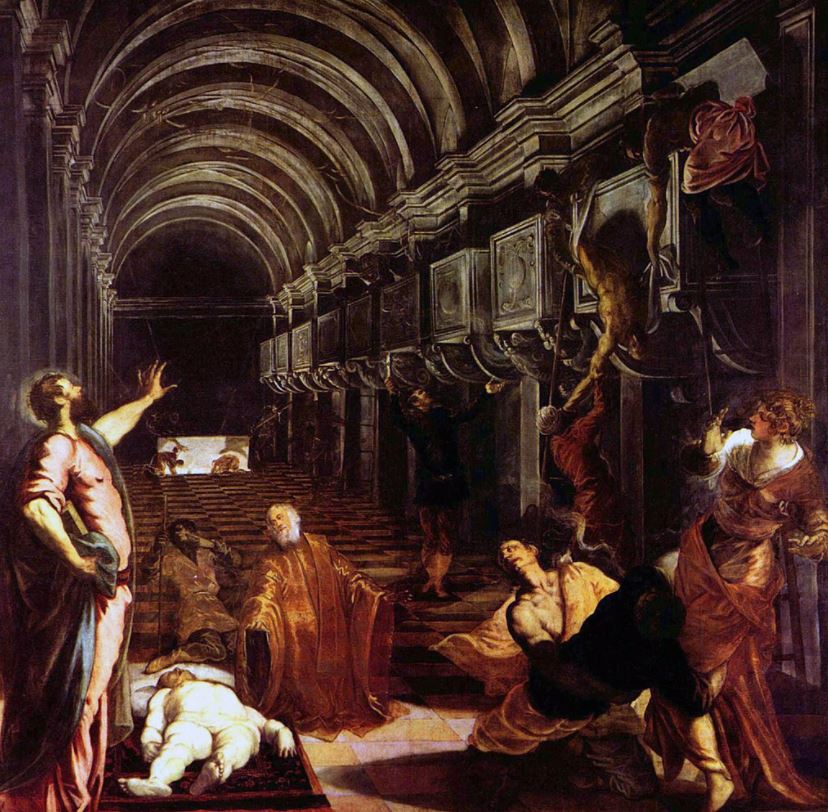It took a while before an artist by the name of Jacopo Robusti (1518-1594), better known by the nickname he got as a little boy “Tintoretto,” made his name in his hometown of Venice, Italy.
Offering his services as a painter for little pay or even for free was one way that he managed to acquire commissions. This resulted in numerous masterpieces which made him one of the most famous Mannerist artists in history.
Known for the speed in which he painted and his aggressive brushwork, he earned himself the nickname “Il Furioso” or “The Furious” all throughout his career.
He is considered to be one of the great masters of the 16th-century Venetian School together with his colleagues Titian and Veronese, and in this article, we’ll take a closer look at some of the most famous Tintoretto paintings.
1. Miracle of the Slave
- Date created: 1548
- Dimensions: 416 × 544 centimeters (164 × 214 inches)
- Location: Gallerie dell’Accademia, Venice, Italy
The Miracle of the Slave is also known as the “Miracle of St. Mark” and is one of the earliest commissions that Tintoretto got. It was ordered by the Scuola Grande di San Marco.
This painting clearly set the tone for the rest of Tintoretto’s career which is defined by the remarkable use of bright and intense colors. The painting portrays an episode in the story of Saint Mark, the patron saint of Venice.

2. Il Paradiso
- Date created: 1594
- Dimensions: 9.1 x 22.6 meters (29.9 x 74.1 feet)
- Location: Doge’s Palace, Venice, Italy
Il Paradiso, on the other hand, was the final work of importance completed by the aged painter at the time. It was commissioned to decorate the Doge’s Palace in Venice and was originally started by Veronese who died during its creation.
It’s considered to be one of the largest oil on canvas paintings in the world on canvas and features over 500 figures. It has been praised as one of the most precious works of art in the world.

3. The Last Supper
- Date created: 1592-1594
- Dimensions: 365 × 568 centimeters (144 × 224 inches)
- Location: Basilica di San Giorgio Maggiore, Venice, Italy
The Last Supper, not to be confused with Leonardo’s Last Supper in Santa Maria delle Grazie in Milan, is another painting that was completed in the latter years of the artist’s life and one of many he created.
It clearly shows the evolution of Tintoretto’s style as he moved away from the frontal composition as was usual for Last Supper paintings. It also features a lot of secondary characters, which was quite revolutionary, as well as a remarkable use of light.
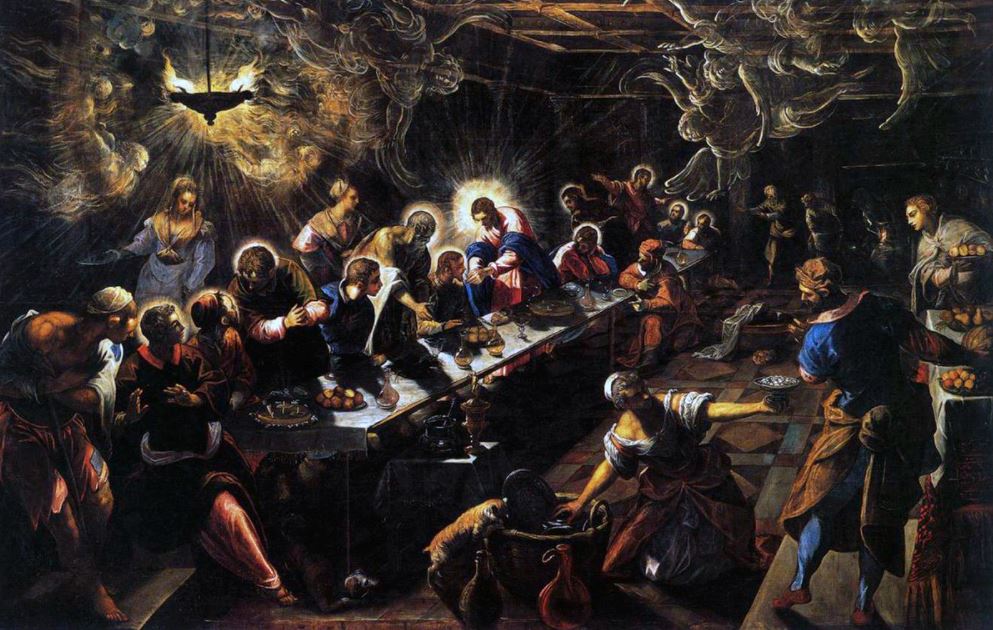
4. Susanna and the Elders
- Date created: 1555-1556
- Dimensions: 146 × 194 centimeters (4.95 × 6.42 feet)
- Location: Kunsthistorisches Museum, Vienna, Austria
Susanna and the Elders depicts a scene from the Book of Daniel in which two elderly men are seen spying on Susanna as she is preparing to take a bath. This was another common scene depicted in multiple paintings during the 16th century.
Tintoretto didn’t shy away from the use of symbols in this painting which is the reason why it’s considered to be one of his ultimate masterpieces. The level of details used to depict the white pearls, silver jewelry, a silk shawl, and a silver jug are simply amazing.

5. Crucifixion
- Date created: 1565
- Dimensions: 536 × 1127 centimeters (211 × 444 inches)
- Location: Scuola Grande di San Rocco, Venice, Italy
The Crucifixion is arguably one of the most popular subjects of Christian religious art and the artist’s version created in the 1560s is considered to be one of the most dramatic of them all.
This immense painting is installed in the Sala dell’Albergo of the Scuola Grande di San Rocco, an amazing structure in Venice. It’s one of the multiple famous Tintoretto paintings located inside this structure.
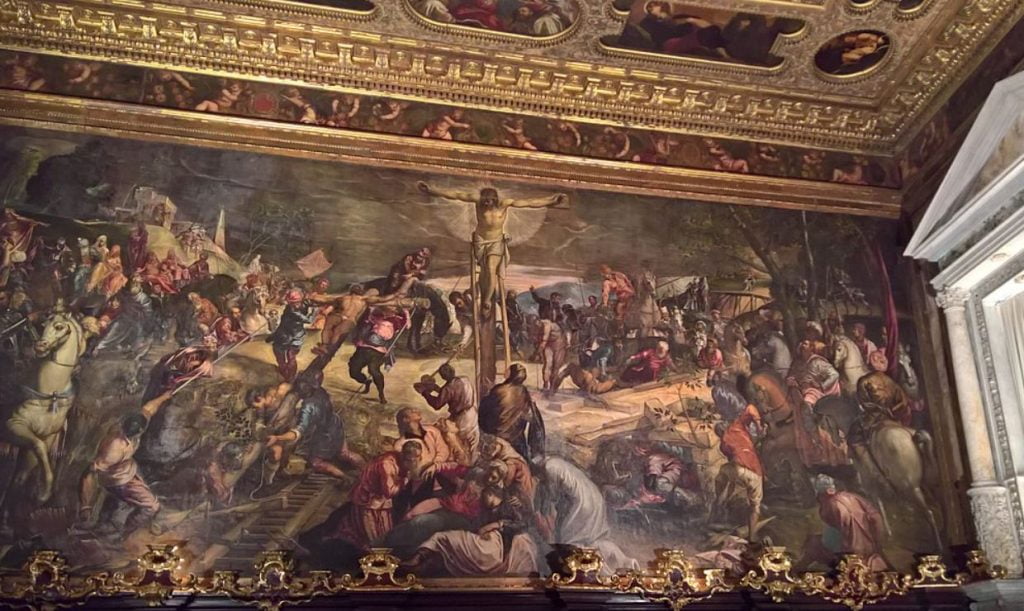
6. St Mark’s Body Brought to Venice
- Date created: 1562-1566
- Dimensions: 398 × 315 centimeters (157 × 124 inches)
- Location: Gallerie dell’Accademia, Venice, Italy
Saint Mark’s Body Brought to Venice is also known as “The Abduction of the Body of Saint Mark” and is yet another painting that was commissioned to decorate the Scuola Grande di San Rocco, even though it has been moved to a popular museum in Venice today.
This painting is renowned for its amazing use of perspective and for the fact that the figures in the foreground are much darker than those in the background. This creates a fascinating effect and intriguing atmosphere.
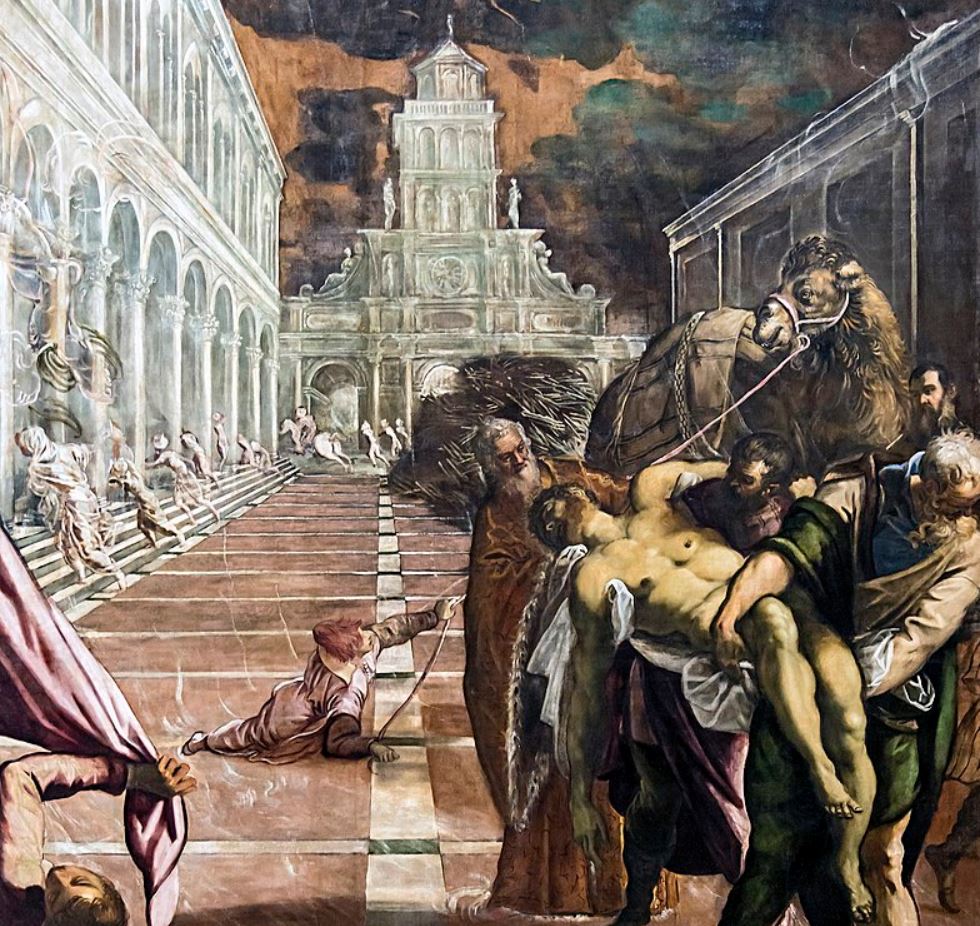
7. Christ at the Sea of Galilee
- Date created: 1575-1580
- Dimensions: 117.1 × 169.2 centimeters (46.1 × 66.6 inches)
- Location: National Gallery of Art, Washington D.C., United States
Christ at the Sea of Galilea is one of those paintings that define Mannerism, also referred to as the late Renaissance. It’s an exaggeration of ideal proportions in order to create a dramatic atmosphere.
In this painting, we can see the figure of Jesus Christ who raises his hand to the apostles who are approaching in a small boat in a hostile-looking sea full of waves.
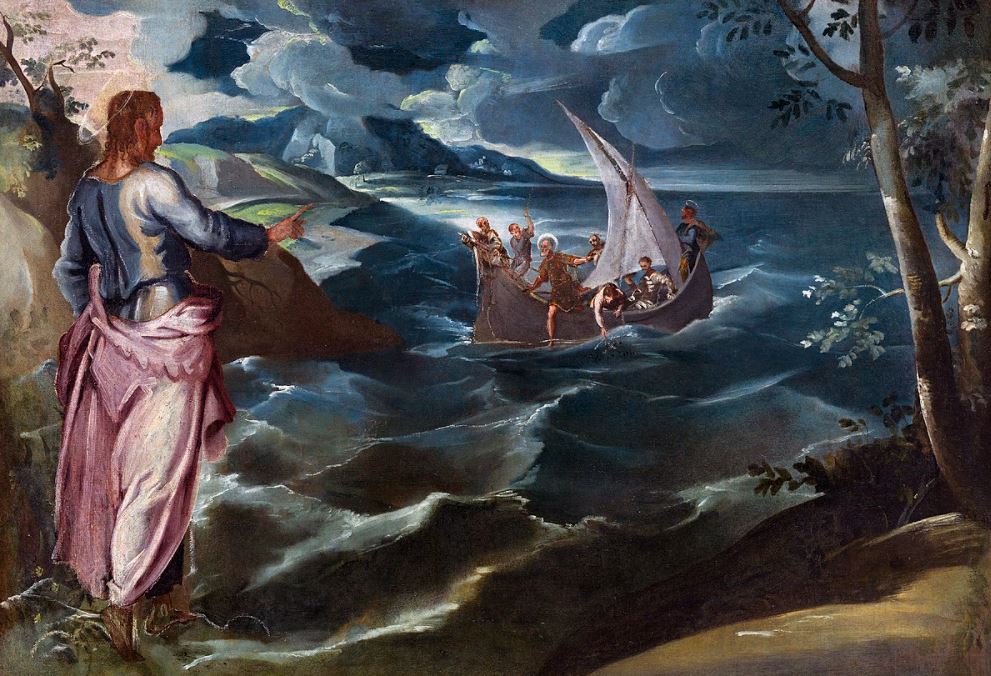
8. Saint George and the Dragon
- Date created: 1555-1558
- Dimensions: 157.5 × 100 centimeters (62.0 × 39 inches)
- Location: National Gallery, London, United Kingdom
Saint George and the Dragon is also sometimes referred to as “Saint George and the Dragon” and depicts the story of Saint George arriving at the city of Silene in Libya. Here he is seen slaying the dragon and as a result, frees the princess who was sent out to be killed.
What makes this painting so special is that the attention is drawn toward the escaping princess as opposed to Saint George and the dragon. This is emphasized by the bright pink dress that she is wearing which reduces the saint and the dragon to background figures.

9. The Origin of the Milky Way
- Date created: 1575–1580
- Dimensions: 148 x 165 centimeters (58 × 65 inches)
- Location: National Gallery, London, United Kingdom
The Origin of the Milky Way is a painting that was originally part of the Orleans Collection, acquired by Philippe d’Orléans, Duke of Orléans, in the early 18th century, but which eventually made it to London where it can be admired today.
The painting depicts a story from Greek Mythology in which the infant Heracles is brought to the goddess Hera who nurses him out of pity. Because Heracles is a bit too eager, he causes pain and she pushes him away. As her milk sprays out of her breast, the Milky Way is created.

10. Finding of the Body of Saint Mark
- Date created: 1562-1566
- Dimensions: 405 × 405 centimeters (159 × 159 inches)
- Location: Pinatoceta di Brera, Milan, Italy
The Finding of the Body of Saint Mark is also known as the “Discovery of the Body of Saint Mark” and is another painting in the cycle of famous Tintoretto paintings depicting a story featuring Saint Mark.
It’s another painting in the typical style of Tintoretto which accentuates the dramatic effect by using a fascinating combination of perspective and light. This defined the artist and is exactly why he became one of the most influential artists of the 16th century, inspiring, for example, the works of El Greco following his departure from Venice to Spain.
